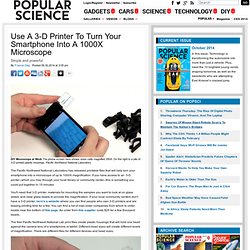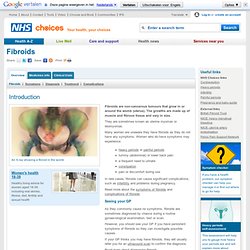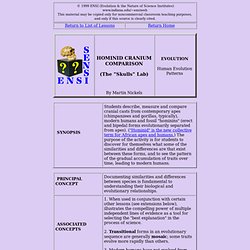

Human Anatomy: Learn All About the Human Body at InnerBody.com. Defective Heart Girl Problems. The Heartbeat. America’s Epidemic of Unnecessary Care. It was lunchtime before my afternoon surgery clinic, which meant that I was at my desk, eating a ham-and-cheese sandwich and clicking through medical articles.

Among those which caught my eye: a British case report on the first 3-D-printed hip implanted in a human being, a Canadian analysis of the rising volume of emergency-room visits by children who have ingested magnets, and a Colorado study finding that the percentage of fatal motor-vehicle accidents involving marijuana had doubled since its commercial distribution became legal. The one that got me thinking, however, was a study of more than a million Medicare patients.
It suggested that a huge proportion had received care that was simply a waste. The researchers called it “low-value care.” But, really, it was no-value care. Could pointless medical care really be that widespread? I decided to do a crude check. To my surprise, it appeared that seven of those eight had received unnecessary care.
“I said, ‘Are you fucking kidding me?’ Mark Jolley. Anatomy of the Spinal Cord. Miami's 10-mile linear park and urban trail — The Underline. Obesity Prevalence Maps 2013 - DNPAO - CDC. Obesity prevalence in 2014 varies across states and territories.

No state had a prevalence of obesity less than 20%. 5 states and the District of Columbia had a prevalence of obesity between 20% and <25%. 23 states, Guam and Puerto Rico had a prevalence of obesity between 25% and <30%. 19 states had a prevalence of obesity between 30% and <35%. 3 states (Arkansas, Mississippi and West Virginia) had a prevalence of obesity of 35% or greater. The Midwest had the highest prevalence of obesity (30.7%), followed by the South (30.6%), the Northeast (27.3%), and the West (25.7%). Prevalence¶ of Self-Reported Obesity Among U.S. Adults by State and Territory, BRFSS, 2014 ¶Prevalence estimates reflect BRFSS methodological changes started in 2011.
Source: Behavorial Risk Factor Surveillance System, CDC. Experiments show we quickly adjust to seeing everything upside-down. In the middle of the 20th century, an Austrian professor turned a man's eyesight exactly upside-down.

After a short time, the man took this completely in his stride. Professor Theodor Erismann, of the University of Innsbruck, devised the experiment, performing it upon his assistant and student, Ivo Kohler. Kohler later wrote about it. Erismann and Kohler: Inversion goggles. BBC about upside down goggles. Haskins Laboratories. New human physiology. Human Physiology. Outlook Web App. Browser - How do I track a workout? / Getting Started on the Web / Knowledge Base - Fitocracy Support. Improving your fitness means tracking your activity to see how it changes over time.

On Fitocracy, tracking your activity gets you points. Get enough points and you may even level up! Hit Track to Start Tracking your workouts is a proven way to improve your fitness, so make sure to Track each of your workouts on Fitocracy. Don’t forget... Chose a date to track Use the Date Picker to select the day you want to track your workout for. Use A 3-D Printer To Turn Your Smartphone Into A 1000X Microscope.
The Pacific Northwest National Laboratory has released printable files that will help turn your smartphone into a microscope of up to 1000X magnification.

If you have access to an 3-D printer--which you may through your local library or community center--this is something you could put together in 15 minutes. The Woman With the Bionic Eye. Second Site Fran Fulton is 66, and she’s been fully blind for about 10 years.

A few weeks ago, all that changed. Fulton suffers from retinitis pigmentosa—a degenerative eye disease that slowly causes light-sensitive cells in the retina to die off. Over the course of several years she lost her sight, and for the past 10 years she hasn’t been able to see anything at all. But in late July, Fulton was outfitted with a system called the Argus II. Modern Life Without a Pancreas. Slowly but steadily a calm began to seep up from within.

The shaking subsided and the fog cleared from my brain. I checked my glucose again: 85. I’d be okay. This time. Fibroids. Fibroids are non-cancerous tumours that grow in or around the womb (uterus).

The growths are made up of muscle and fibrous tissue and vary in size. They are sometimes known as uterine myomas or leiomyomas. Many women are unaware they have fibroids as they do not have any symptoms. Women who do have symptoms may experience: heavy periods or painful periods tummy (abdominal) or lower back pain a frequent need to urinate constipation pain or discomfort during sex In rare cases, fibroids can cause significant complications, such as infertility and problems during pregnancy. Lesson: Evolution: HOMINOID CRANIUM COMPARISON. 1.

Have students plot a chronology of hominin existence, based on the age-ranges of the different hominin species (see the mini-lesson on this site: "Chronology Lab"). 2. Arrange the skull casts in a row, oldest on the left (as viewed by students). Be sure to put the modern ape skulls on the class' far right, at the same end as modern humans, since they are both modern. This is an excellent time to get students to see that humans did NOT evolve from apes, but rather apes and humans evolved from some common ancestor which was neither ape nor human, but probably more apelike, due to its more likely primitive semi-erect posture.
The #1 Applied Human Anatomy Site on the Web. Human Body, Human Body Information. Beyond the Brain What goes on within the human skull is more complex and fantastic than anyone imagined.

And scientists are finding ways to delve even deeper into what we know of the mind. Mending Broken Hearts Cheeseburgers, smoking, stress—risk factors for heart disease, a malady reaching global epidemic proportions. Now, discoveries about genetic triggers may help us spot trouble before it starts. Unmasking Skin Equal parts armor, air-conditioning system, and genetic heritage, skin is more than skin-deep.
Scientists are probing beneath the surface of the body's largest organ. Instant Anatomy - Learn human anatomy online. Anatomy...MUN Medical School. Anatomy contains labeled images that I have used this year in my lectures/demonstrations for first year medical students at Memorial University. This site is being developed as classes proceed. Homepage for the Anatomy Lesson. I will approach this study of human anatomy by regions as shown below: This is commonly called a regional approach to the study of anatomy.
Another approach would be the systemic approach, which takes a look at each system separately (vascular, respiratory, etc.) Each lesson will point out various structures found in the particular region being examined and then followed by a review of what has been covered. Within each region, the following items will be pointed out: When we study the THORACIC, ABDOMINAL, and PELVIC cavities, the above list will also include the various organs. Anatomy, Physiology & Pathology of the Human Eye. Primal Pictures 3D human anatomy medical software. Anatomy Library - Anatomy Atlases. The Cornea Research Foundation: Research - Corneal Transplant - Endothelial Keratoplasty Ek. Corneal Transplants. FindingDulcinea.
Animation Activities. Traité d'anatomie humaine: anatomie ... - Léo Testut. The Heart 3. The various parts of the heart, including its chambers, valves and arteries are shown in the figures displayed below. The diagram on the right shows a longitudinal (cut from top to bottom) section of the heart. The flow of blood is represented by arrows. The narration will describe different phases of the cardiac circulation. The animation will serve as a revision or reinforcement of the various stages or steps of the circulation, with arrows and labels serving as a reminder of what takes place.
You may click on the stop, rewind and play buttons to control the animation. The pictures below represent a heart that is cut along the horizontal axis. Map of the Human Heart. Map of the Human Heart Day and night, the muscles of your heart contract and relax to pump blood throughout your body. In the Step Thru below, see the complicated path the blood takes as it moves in and out of the heart. Step Thru Animation Oxygen-poor blood (shown in blue) flows from the body into the right atrium. Larry M. Interactive Biology, By Leslie Samuel.
New human physiology.